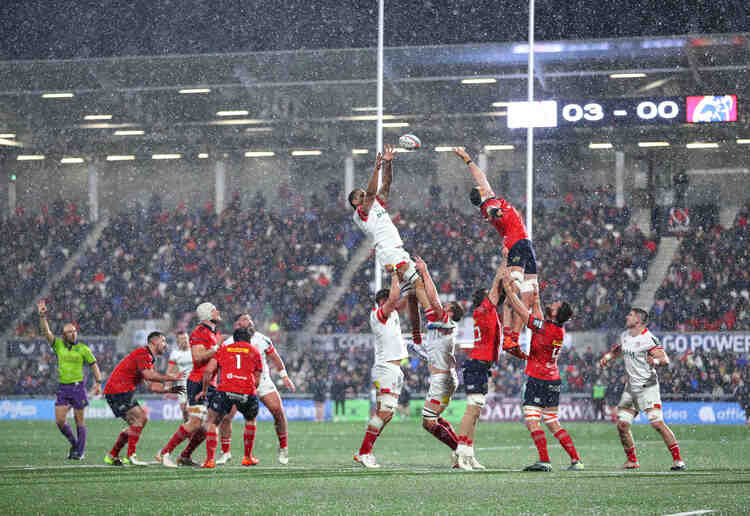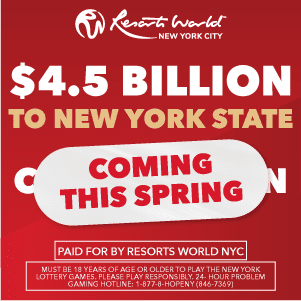"Eire apparent" roared the New York Post Monday morning in a front page headline announcing Rory McIlroy's extraordinary win in the U.S. Open.
Those who know the Post when it comes to the convoluted politics of the island we love so dear would have been smiling at that one.
Rory McIlroy is an Irish golfer indeed, but he plays under the unofficial flag of Northern Ireland, the Ulster Banner, Six Counties version, and not the tricolor that flutters over what would be more widely understood to be Eire.
This has been the practice for some years now. English, Scottish, Welsh, Irish golfers from the Republic, and golfers from the North, all get a different flag.
However, the Irish golfers, regardless of flag, represent an island that is a single entity in golf terms. Simply put, there is no border in Irish golf, the game on the island being run by the Golfing Union of Ireland, which came into being in Belfast in 1891.
The GUI began with nine clubs on its list, all of them in Ulster. Over the course (no pun) of the following century the union's writ extended to the entire island and today the GUI comprises a central council and four provincial branches covering Leinster, Munster, Connacht and Ulster.
That said, while the GUI spans the political border, that same border does come into play on the international level when it comes to flags and precise national designation for players.
Thanks to the exploits of McIlroy, Graeme McDowell and Darren Clarke in particular, the golfers from the wee North have been making headlines of late at a level separate from the Republic where Padraig Harrington has been king pin.
Hence the frequent media references in recent days to Northern Ireland as a "country" and a "nation," this apparently all on its lonesome and regardless of constitutional niceties devised by London that would view the North as a mere province.
"How is it that a country of roughly 1.6 million people is flying so high?" the New York Times asked last week in a report as McDowell and McIlroy geared up to represent Northern Ireland in the tournament that would ultimately see G-Mc surrender his title to R-Mc.
Over the course of the weekend there would be frequent media references to the North as a country or nation, so much so that the British government might have taken the opportunity to let the place slip over the horizon once and for all. Nobody would have said boo, so riveted were one and all by Rory's brilliance.
Independence secured with golf clubs would be an example for a troubled world indeed.
By late Sunday, though, NBC displayed a list of "Irishmen" who had won golf majors. All there together were Rory, Graeme, Padraig Harrington and Fred Daly, who won the British Open in 1947.
The "Red Hand" Ulster Banner - not today an official government flag it should be emphasized, and one more associated with loyalist areas than fancy country clubs - was beside the names of McIlroy, McDowell and Daly, while Harrington's was accompanied by the tricolor which, by the by, was far more in evidence being waved about in the huge crowds at Bethesda than its wee North counterpart.
If nothing else, all this curious golfing nomenclature might prompt the more curious to indulge in a little historical research that might help explain to them the history and geography of an island that is anything but par for the course.
SAY WHAT?
But the curious might want to take a pass on David Feherty. Feherty, another wee North golf luminary, best known these days for his colorful commentary for CBS and the Golf Channel, was speaking on the latter on the evening of McIlroy's first round. He was asked to explain the North's recent run of success in the game.
Feherty gave a potted history that went on the lines of Ireland being made up of four provinces, the smallest being Ulster with just six counties.
Now hold on there Mr. Feherty! As outlined above, Ireland's specific golfing boundaries designate an Ulster that is actually made up of the historical nine counties. The border doesn't enter the frame, though in fairness the County Down man was probably thinking in the more specific context of Northern Ireland, as opposed to the broader one of Ulster.
Be that as it may, Feherty dug a deeper hole for himself when he stated that the Six Counties was a very wee place, so tiny that it was smaller than even Rhode Island.
IF has come across this comparison with Rhode Island before, once hearing a politician actually state that the entire island of Ireland was smaller than the state that is, yes, the smallest in the Union.
The fact is, even the Six Counties on their own are significantly larger in area than Rhode Island. The New England state covers an area of 1214 square miles. The Six Counties extend over 5345 square miles, more than four times the area of Rhode Island.
You can take that to the 19th hole!
THEY SAID
"There is something about Rory McIlroy that just makes you want good things to happen to him. Maybe it is all that talent or those unruly curls. Maybe it is the classy way he handled matters after he melted down at the Masters in the final round this April. Maybe it is the charity trip to earthquake-ravaged Haiti the week before he arrived here for the U.S. Open.
"Maybe it is all of that and the fact that in this age of self-entitled, overpaid underachievers in sports he holds out the promise of being the real deal with the added value of being a nice guy in the process. Here is a young man who may not only live up to the hype, but also not allow his genuine goodness to be altered by his success." ---- Golf Digest magazine.









